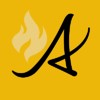
The wildfire danger remains EXTREME for the entire Slave Lake Forest Area. Conditions remain extremely dry allowing a fire to ignite easily and spread very quickly.
SWF-069 - a new wildfire has started 14 kilometers southeast of Trout Lake. It is classified as out of control and is estimated to be 300 hectares in size. Three air tankers groups and 5 helicopters are working on this wildfire.
Slave Lake Wildfire 49 is approximately 1 kilometre north of highway 754 on the southeast flank. The fire is estimated to be 40,752 hectares in size. Ground crews, air tankers, helicopters and dozers were able to make headway today by continuing to secure the east, west and south flanks. Smoke from this fire is heavy in the Wabasca area as a result of south west winds.
If you experience respiratory difficulties, visit Alberta Health Link or dial 811. Visit www.firesmoke.ca to view the most current smoke forecast.
Firefighters are urging everyone to use caution and report wildfires immediately by calling 310-FIRE or #FIRE on your cell phone.
Click here to view the wildfire danger map for Sunday, May 26.
Smoke from wildfires in northern Alberta is causing poor air quality and reducing visibility. Northerly winds are causing smoke to affect areas south of the wildfires today. Winds are forecast to shift to southerly Sunday morning and southwesterly Sunday evening.
Individuals may experience symptoms such as increased coughing, throat irritation, headaches or shortness of breath. Children, seniors, and those with cardiovascular or lung disease, such as asthma, are especially at risk.
People with lung diseases, such as asthma and COPD, can be particularly sensitive to air pollution. They will generally experience more serious health effects at lower levels. Pollution can aggravate their diseases, leading to increased medication use, doctor and emergency room visits, and hospital visits.
Stay inside if you have breathing difficulties. Find an indoor place that's cool and ventilated. Using an air conditioner that cools and filters air may help. If you open the windows you may let in more polluted air. If your home isn't air-conditioned, consider going to a public place (library, shopping mall, recreation centre) that is air-conditioned.
Wildfire Situation as of 2000 hrs, May 26
Since March 1st in the Slave Lake Forest Area there have been 64 wildfires and 36,395 hectares burned.
On high alert
Fire lookouts are on high alert constantly watching for smoke and firefighters in helicopters, various pieces of heavy equipment and airtankers are ready to respond to any new wildfires that may start.
Help from other provinces is here
63 firefighters from BC, New Brunswick and Nova Scotia are assisting Alberta staff with these fires.

Slave Lake Wildfire Number 49 at 0900 hrs., May 26. A smoke column breaks through the inversion.
McMillan Wildfire Complex
Slave Lake wildfires number 49 and 50 are north of Highway 754 at kilometre 30 and 43. These wildfires are approximately 40 kilometres southwest of Wabasca, 30 kilometres northeast of Marten Beach and 40 kilometres northeast of Slave Lake.
Slave Lake Wildfire 49
This fire is classified as out of control and is approximately 40,752 hectares in size. Helicopters, heavy equipment and fire fighters continue to extinguish hot spots and establish guard up the flanks of the wildfire to contain the fire, preventing the spread.
Slave Lake Wildfire 50
This fire is approximately 1,457 hectares and is 100 per cent contained by fire guard. Firefighters continue to monitor this fire.
225 personnel including firefighters and support staff are working to fight these wildfires along with 20 helicopters and 45 pieces of heavy equipment. An incident management team of fire experts are managing this complex.
The cause of these wildfires is under investigation.
If you have any questions please call Wildfire Information Officer Lynn Daina 780-799-9253.
Download the free Alberta Wildfire app for your mobile device and check back frequently for updates. Click on the Slave Lake tab to access the wildfire update for the Slave Lake Forest Area.
For information on the wildfire situation across the province of Alberta, visit: wildfire.alberta.ca.

FIRE BAN AND OFF-HIGHWAY VEHICLE RESTRICTION IN EFFECT
A fire ban and off-highway vehicle restriction is now in effect for the entire Slave Lake Forest Area and other parts of Alberta.
The Town of Slave Lake, Big Lakes County and Town of High Prairie are also issuing a fire ban and OHV restriction.
To view a map of the fire ban/OHV restriction area visit www.albertafirebans.ca
Prohibited
Do your part to prevent wildfires this spring.
When riding your off highway vehicle stop frequently to remove any build-up of debris from the hot spots on your machine. An off-highway vehicle exhaust can reach temperatures of over 200 degrees Celsius. That means it won't take long for that wet and muddy debris to dry up, start smouldering and fall to the ground as you drive away.
Never leave your campfire unattended and make sure it's out. Soak it with water, stir up the ashes and soak it again. A campfire is out when the ashes are cool to the touch.
If you have any questions please contact:
Lynn Daina
Wildfire Information Officer
Mobile: 780-799-9253
Email: lynn.daina@gov.ab.ca
Keep up to date on the wildfire situation by subscribing to the Slave Lake Forest Area Wildfire Update or download the free Alberta Wildfire app for Apple or Android devices.



